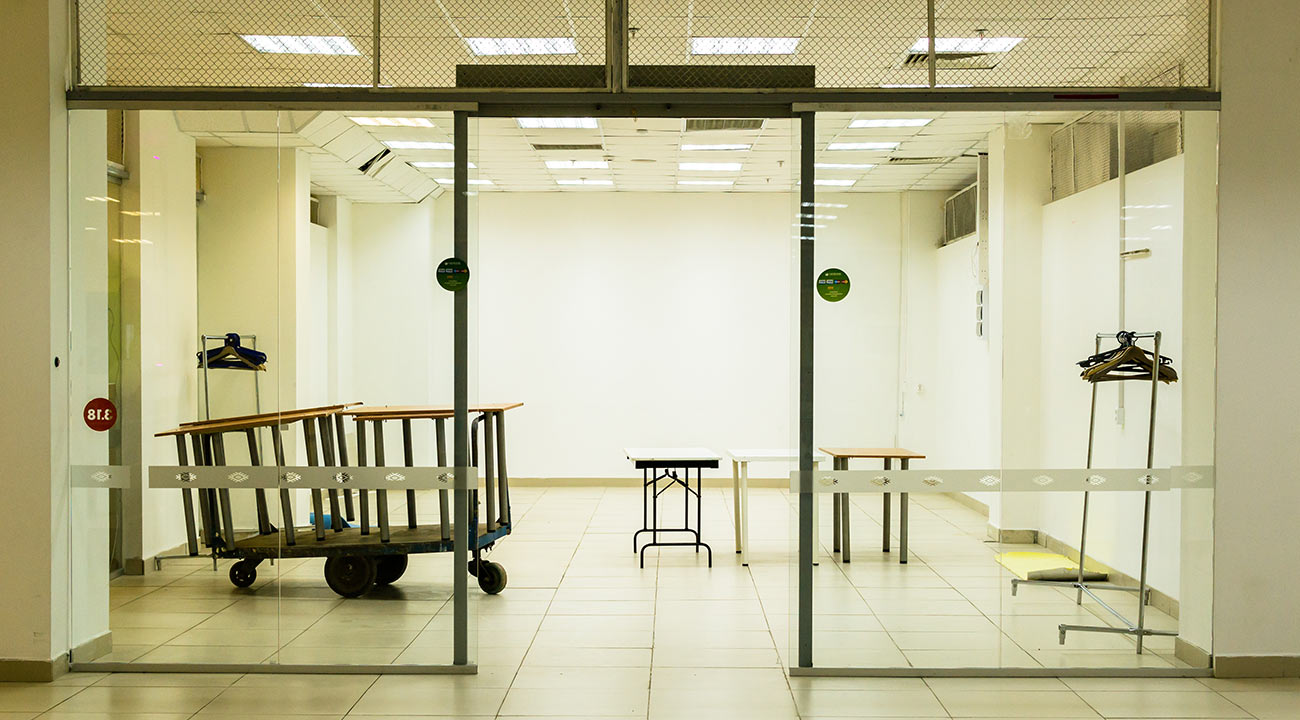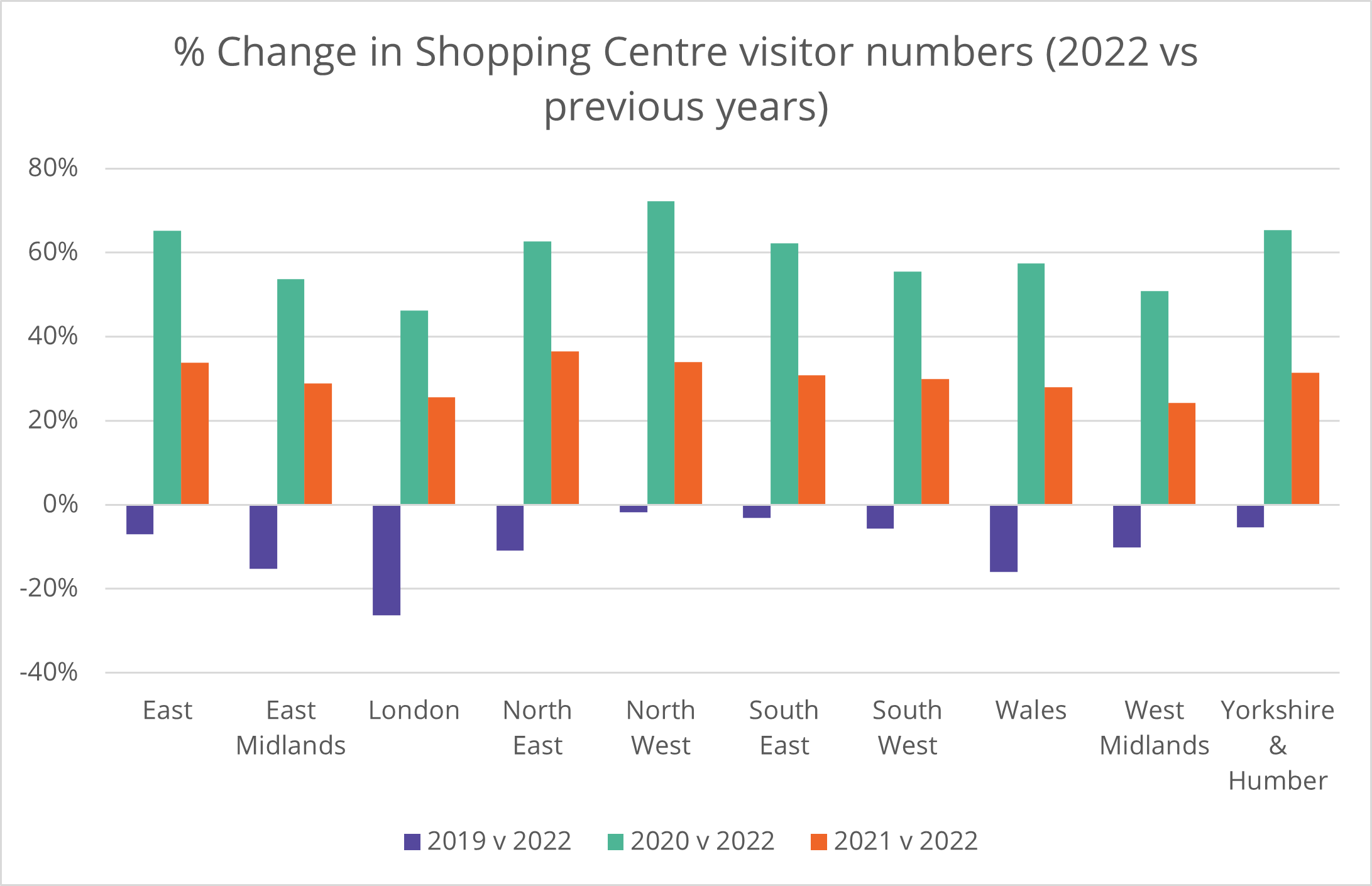Shopping centres revisited

The struggles facing shopping centres, even prior to the pandemic, have been well documented. With over 680 shopping centres across the country, it is clear that there is an over-supply of shopping centre space, with many assets being old, tired or in need of redevelopment. Their exposure to department stores, many of which anchored shopping centres, as well as many of the other high street chains which have gone into administration, combined with the impact of people buying less in stores, has all contributed to the decline of the asset class. Over the last ten years, vacancy rates have remained higher than on high streets and on retail parks. On top this visitor numbers have declined, rents have decreased, and capital values have plummeted. So, what is the outlook for shopping centres and is there hope for a recovery?
Challenges continue driven by high vacancy rates, changing consumer shopping habits and expensive operating costs
On average, the current vacancy rate for shopping centres across the UK stands at 18.2%, according to the latest data from the Local Data Company, but almost one in ten of them have vacancy rates of over 40% which is causing significant headaches for landlords on how to fill these void spaces during a time when some retailers are shrinking their estates.
Service charges on top of high rents and business rates have also forced some retailers to exit these locations. A recent article by Drapers revealed that service charges could increase by up to 25%, driven by inflation and energy prices, and as a result some occupiers are requesting service charges to be capped in order to limit these cost liabilities. This is likely to force more retailers to exit shopping centres as the increasing costs create a downwards spiral effect – the reduced number of tenants will likely result in lower footfall thereby impacting store sales which could eventually render the store unviable.
The strength of performance at retail parks over the last few years have also been detrimental to shopping centres. Some of the UK’s biggest retailers including Next and Marks & Spencer have changed their strategy and are actively relocating to larger out-of-town units on competing retail parks, where footfall has almost recovered to pre-pandemic levels, as part of store rationalisation programmes. Service charges at retail parks are also significantly lower whilst vacancy rates remain at record-low levels of around 4.5% according to our data. They are attracting more and more customers driven by factors such as free parking, click and collect facilities and a wide mix of tenants, which often includes essential retailers such as the major grocers.
Service charges on top of high rents and business rates have also forced some retailers to exit these locations. A recent article by Drapers revealed that service charges could increase by up to 25%, driven by inflation and energy prices, and as a result some occupiers are requesting service charges to be capped in order to limit these cost liabilities. This is likely to force more retailers to exit shopping centres as the increasing costs create a downwards spiral effect – the reduced number of tenants will likely result in lower footfall thereby impacting store sales which could eventually render the store unviable.
The strength of performance at retail parks over the last few years have also been detrimental to shopping centres. Some of the UK’s biggest retailers including Next and Marks & Spencer have changed their strategy and are actively relocating to larger out-of-town units on competing retail parks, where footfall has almost recovered to pre-pandemic levels, as part of store rationalisation programmes. Service charges at retail parks are also significantly lower whilst vacancy rates remain at record-low levels of around 4.5% according to our data. They are attracting more and more customers driven by factors such as free parking, click and collect facilities and a wide mix of tenants, which often includes essential retailers such as the major grocers.
Is it all bad news though?
Despite these issues, there is some positive news. Vacancy rates in shopping centres are slowly declining - take-up of units in shopping centres recorded its best performance since 2013 resulting in a year-on-year decrease in vacancy rate of 0.9%. The impending rate revaluation will also deliver some much needed relief for tenants; in Dartford, which is home to Bluewater Shopping Centre, retail business rates will fall by 38%.
They also appear to be of growing interest to retailers as an investment opportunity. Recently the Frasers Group acquired the Overgate Centre in Dundee and the Mall in Luton for around £90 million whilst Ikea are reported to be purchasing the Churchill Square Shopping Centre in Brighton for £175+ million.
Some of the prime shopping centres are also recovering well. Earlier this year Unibail-Rodamco-Westfield, the owner of both Westfield shopping centres in London, announced strong trading results for 2022 and hailed the end of the ‘covid effect’ citing tenant sales across its shopping centres in Europe back to pre-pandemic levels. The Trafford Centre in Manchester has seen JD Sports relocate to a larger unit, which is now the brand’s biggest store in the UK and Marks & Spencer will relocate from its existing 87,000 sq. ft store into the vacant 135,000 sq. ft former Debenhams store later this year. In March this year, Grosvenor announced that Liverpool One saw a 16.5% uplift in sales in the first two months of 2023, compared to the same period in 2022.
They also appear to be of growing interest to retailers as an investment opportunity. Recently the Frasers Group acquired the Overgate Centre in Dundee and the Mall in Luton for around £90 million whilst Ikea are reported to be purchasing the Churchill Square Shopping Centre in Brighton for £175+ million.
Some of the prime shopping centres are also recovering well. Earlier this year Unibail-Rodamco-Westfield, the owner of both Westfield shopping centres in London, announced strong trading results for 2022 and hailed the end of the ‘covid effect’ citing tenant sales across its shopping centres in Europe back to pre-pandemic levels. The Trafford Centre in Manchester has seen JD Sports relocate to a larger unit, which is now the brand’s biggest store in the UK and Marks & Spencer will relocate from its existing 87,000 sq. ft store into the vacant 135,000 sq. ft former Debenhams store later this year. In March this year, Grosvenor announced that Liverpool One saw a 16.5% uplift in sales in the first two months of 2023, compared to the same period in 2022.
Visitor numbers continue to increase

Source: Visitor Insights
Visitor numbers to many retail locations across the country are still recovering following the pandemic but there has been a steady increase throughout 2022 of shoppers returning to physical store locations. Avison Young have analysed visitor numbers across selected shopping centres across the country, comparing 2022 data with previous years, to measure the extent of this recovery. It showed that visitor numbers to shopping centres are still well below 2019 levels, especially those shopping centres that are located in town centres where visitor numbers were down 15%.
London has seen the slowest recovery compared to other locations, on average, down by 26% compared to 2019. The situation was worse in centres located in inner London, where visitor numbers were down by 38% on average. Given its status as a global city, this is not surprising as central London attracts visitors from a wide catchment, particularly from overseas. According to data from the GLA there were 11.2 million overseas arrivals in 2022 – almost half of the pre-pandemic level of 21.7 million which had a huge impact on retail spend. In the outer boroughs it appears the impact has been lessened likely due to some of these centres catering for local residents and home to essential retailers such as supermarkets and local services. Hybrid working will also be a factor as workers are typically coming in to central London offices an average of 2-3 days per week – something also benefitting the outer boroughs as commuters spend more time and money in their local communities than they did back in 2019.
London has seen the slowest recovery compared to other locations, on average, down by 26% compared to 2019. The situation was worse in centres located in inner London, where visitor numbers were down by 38% on average. Given its status as a global city, this is not surprising as central London attracts visitors from a wide catchment, particularly from overseas. According to data from the GLA there were 11.2 million overseas arrivals in 2022 – almost half of the pre-pandemic level of 21.7 million which had a huge impact on retail spend. In the outer boroughs it appears the impact has been lessened likely due to some of these centres catering for local residents and home to essential retailers such as supermarkets and local services. Hybrid working will also be a factor as workers are typically coming in to central London offices an average of 2-3 days per week – something also benefitting the outer boroughs as commuters spend more time and money in their local communities than they did back in 2019.

Source: Visitor Insights
Change in tenant mix
As a result of the vast amounts of empty space, landlords are having to be more innovative in terms of the tenant mix to fill the vacant spaces . There has been increasing interest in the change of use of some of the vacant space into other alternative uses such as healthcare, education, and residential as well as an increasing number of leisure tenants moving into vacant units over the last couple of years which is helping to increase footfall. The former Debenhams store at the Southside Shopping Centre in Wandsworth was converted into entertainment brand Gravity’s first ‘active entertainment experience’ venue in 2021 and has helped deliver a 31% increase in the number of visitors to the shopping centre between 2021 and 2022. Following its success, Gravity has now secured a second site at the former Debenhams at Liverpool One which is expected to open later this year. At the Whitgift Centre in Croydon, an education start-up company, Working Class, has been appointed to take 150,000 sq ft of space “to create an education-based anchor for the Whitgift Centre, featuring a high street campus with retail and leisure uses run by students on the ground floor with lecture/classroom space above”.
What next?
There is no one solution to the problems faced by shopping centre owners – every location has its own unique characteristics and challenges .There are many shopping centres which will continue to remain popular amongst consumers, and those that are managed well and cater for the local demographic should continue to perform well. For those centre owners suffering from high levels of vacant space especially those in need of redevelopment, landlords will have to think creatively and work with local authorities, local businesses and other regeneration experts in order to create a thriving location to suit the needs of the local community.
Contact us

